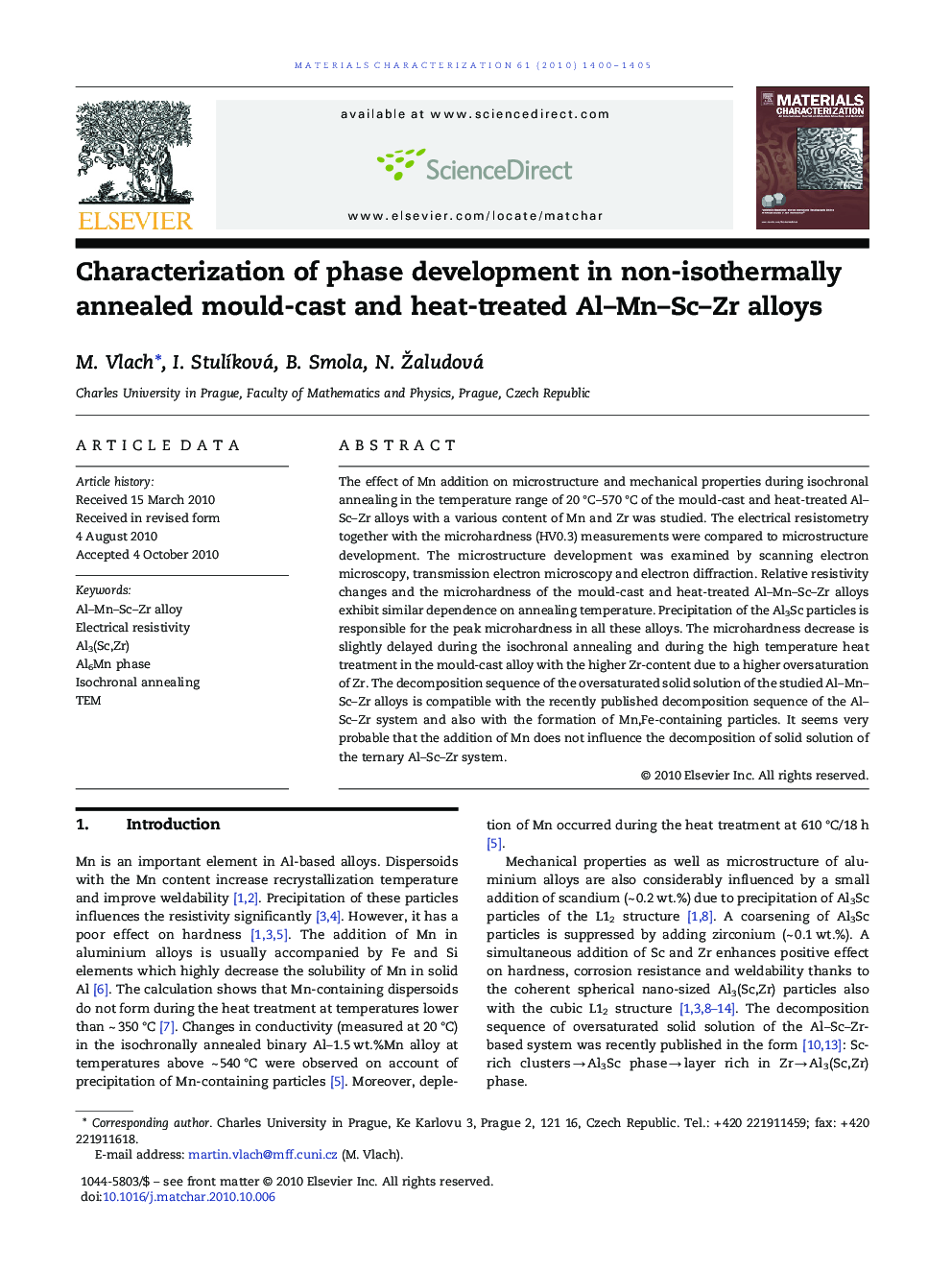| Article ID | Journal | Published Year | Pages | File Type |
|---|---|---|---|---|
| 1571994 | Materials Characterization | 2010 | 6 Pages |
The effect of Mn addition on microstructure and mechanical properties during isochronal annealing in the temperature range of 20 °C–570 °C of the mould-cast and heat-treated Al–Sc–Zr alloys with a various content of Mn and Zr was studied. The electrical resistometry together with the microhardness (HV0.3) measurements were compared to microstructure development. The microstructure development was examined by scanning electron microscopy, transmission electron microscopy and electron diffraction. Relative resistivity changes and the microhardness of the mould-cast and heat-treated Al–Mn–Sc–Zr alloys exhibit similar dependence on annealing temperature. Precipitation of the Al3Sc particles is responsible for the peak microhardness in all these alloys. The microhardness decrease is slightly delayed during the isochronal annealing and during the high temperature heat treatment in the mould-cast alloy with the higher Zr-content due to a higher oversaturation of Zr. The decomposition sequence of the oversaturated solid solution of the studied Al–Mn–Sc–Zr alloys is compatible with the recently published decomposition sequence of the Al–Sc–Zr system and also with the formation of Mn,Fe-containing particles. It seems very probable that the addition of Mn does not influence the decomposition of solid solution of the ternary Al–Sc–Zr system.
Research Highlights► Al3Sc particles are responsible for the peak microhardness in all the studied alloys. ► The microhardness decrease is delayed in the alloy with the higher Zr-content. ► The peak hardening of the heat-treated alloys is shifted to higher temperatures. ► Mn does not influence the decomposition sequence of the Al–Sc–Zr system.
